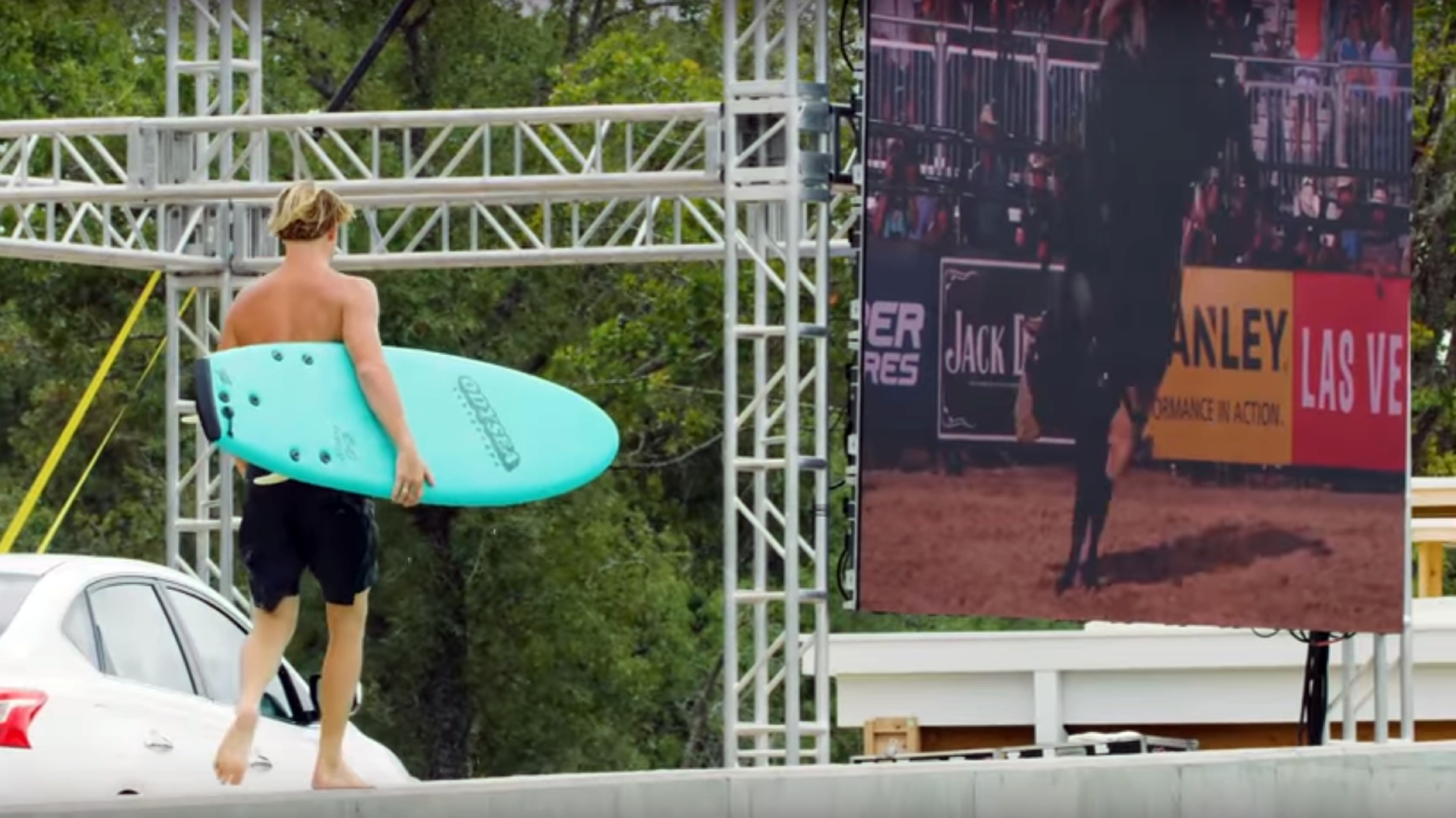Fun without losing an eye: Softboards wave pool romp

A little knowledge via some digital softboard wave pool candy
Softboard surfboards speak all languages. From Dude, “they are, like, totally f’ckin fun bro,” to sales associate, “Softboards are so hhhhottt! right now!” to an inebriated Yank doing a fake Aussie accent, “These are the feckin sh*t mate!” – softboards might be the perfect wave pool accompaniment.
Thanks to the antics of social media superstars like Jamie O’Brien and crafty marketing, this new segment of the surf hardgoods industry speaks volumes of fun.
Fun without losing an eye
JOB’s board transfers at places like Pipe and the Wedge take the severity and sting out of waves of consequence. By riding a board that won’t brain you, slice open your leg or pierce your oracular cavity, the danger element is drastically reduced. Not that these boards defang the reef at Pipe or the compression of the Wedge, but they nullify the most dangerous aspect of surfing – colliding with a hard surfboard.
First generation softboards
The first generation softboards were exclusively beginner boards meant to not kill you during the dangerous beginner period. Their main performance trait being that their softness wouldn’t brain a newbie bouncing around in the whitewater. Unfortunately, these early models warped took on water like a sponge and after a few years of use, resembled a giant, faded tampon applicator.
Generation next
Now we have a whole new crop of performance softboards from brands like Catch Surf and Softech. With Mick Fanning even launching his own signature range of MF Surfboards.
The technology has come a long way too. While the original foamies many of us learned to surf on was better suited for use as a sleeping pad, today’s high-tech construction focuses on performance.
Many models have finely tuned rocker and bottom contours. Construction methods and design include CNC milling, compressed EPS cores and recessed carbon fiber rods and/or strips. The resulting spring and torsion flex built into many models, make the foamie feel extremely lively under your feet.
And while you’ll never confuse a softboard’s performance with that of a polyurethane team-glassed sled, the advancements in tech make them a lot more fun than they used to be.
What kind of foamies can I find?
SUP
You most likely won’t use it in the pool, so we won’t go too deep. Unfortunately SUPS need stiffness to glide through the water easily when you expend all that back-breaking energy to move. That said, there are many softboard SUPs on the market, their benefits being price point and safety.
Longboards/Beginner boards
From 7-9 feet softboards rule the inside whitewater sections of the world’s beaches. They are durable and don’t hurt when they strike newbie surfers or innocent bystanders wading in the shallows. Most have a “slick skin” bottom veneer which helps keep the board moving. Remember, the more flex a board has, the slower it will go. This can be desirable as you bounce around in the foam.
Finless
More floaty than an alaia the finless variety of foam boards range in length from 4’10” (an oversized boogie board really) and 6’6″. They’re fun but take some skill to use. The advantage of a low volume paulownia wood alaia is that the thin edges take over steering duties where the fins would be. With the added puff of a softboard, some of that edge control is lost.
Single fins, twin fins, thrusters
After the above, there are a variety of shortboard tweaks to keep your surfing fresh. To get an idea of what’s out there BSR Surf Resort hosted the Stab High crew for a softboard expression session of sorts. Check Dion Agius getting air on a single fin and see just how fun an acid drop can be on a foamie.
Have more interest in softboards? Let us know and we’ll put together a full-on user guide.
Trackback from your site.
Related Coverage
